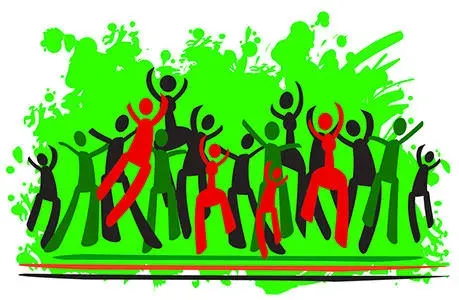 Kwanzaa is an African-American cultural holiday that is celebrated from December 26th through January 1st. It was invented in 1966 by Dr. Maulana Ndabezitha Karenga (born Ronald McKinley Everett), founder of the Black Power group "US Organization"". Kwanzaa is rooted in the first harvest celebrations traditionally practiced among many different African tribes. The word Kwanzaa itself is derived from the Swahili phrase ""Matunda ya Kwanza"", which means ""first fruits"". Since Kwanzaa is not a religious holiday, it can be celebrated alongside Christmas or Hanukkah, although Dr. Karenga originally intended it to be a separate holiday, celebrating African-American heritage, community, and culture."
Kwanzaa is an African-American cultural holiday that is celebrated from December 26th through January 1st. It was invented in 1966 by Dr. Maulana Ndabezitha Karenga (born Ronald McKinley Everett), founder of the Black Power group "US Organization"". Kwanzaa is rooted in the first harvest celebrations traditionally practiced among many different African tribes. The word Kwanzaa itself is derived from the Swahili phrase ""Matunda ya Kwanza"", which means ""first fruits"". Since Kwanzaa is not a religious holiday, it can be celebrated alongside Christmas or Hanukkah, although Dr. Karenga originally intended it to be a separate holiday, celebrating African-American heritage, community, and culture."
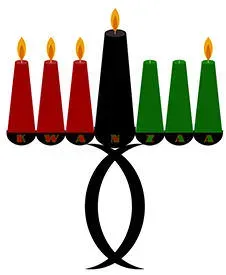 Each of the seven days of Kwanzaa observes a specific core value, known as Nguzo Saba. For each of the seven days, a different candle is lit on a special seven-pronged candle holder called the Kinara. The candles are known as Mishumaa Saba. Three candles placed on the left are red, symbolizing struggle; the middle candle is black, symbolizing the African American people; and the three candles on the right are green, symbolizing future and hope. The black candle is always lit first, and some people light the remaining candles from left to right (red to green), while others alternate between red and green candles.
Each of the seven days of Kwanzaa observes a specific core value, known as Nguzo Saba. For each of the seven days, a different candle is lit on a special seven-pronged candle holder called the Kinara. The candles are known as Mishumaa Saba. Three candles placed on the left are red, symbolizing struggle; the middle candle is black, symbolizing the African American people; and the three candles on the right are green, symbolizing future and hope. The black candle is always lit first, and some people light the remaining candles from left to right (red to green), while others alternate between red and green candles.
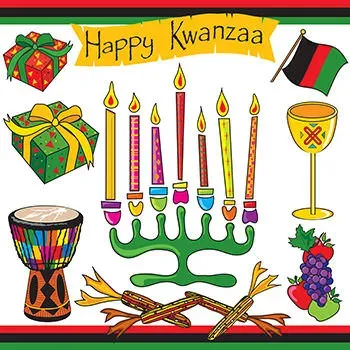 When celebrating Kwanzaa, people may say "Joyous Kwanzaa"" to each other. The house may be decorated with black, green and red colors, and decorative flags, banners and posters depicting the seven principles, called Bendera, may be hung all over the house. The centerpiece involves placing a Mkeka, a straw or woven mat on the table, which represents the historical foundation of African tradition and ancestry. Mazao, which is fruit or crops, are then placed in a bowl on the straw mat. Mazao serves as a reminder of original, continental African harvest celebrations and the community's productivity. Ears of corn, called Muhindi, one for each child in the family, or two ears if there are no children in the family, are then placed next to the Mazao on the straw mat. The corn symbolizes the children as the future of the community. Finally, the setup is complete with a Kikombe cha Umoja ï¾– a cup to represent unity within the family and the community."
When celebrating Kwanzaa, people may say "Joyous Kwanzaa"" to each other. The house may be decorated with black, green and red colors, and decorative flags, banners and posters depicting the seven principles, called Bendera, may be hung all over the house. The centerpiece involves placing a Mkeka, a straw or woven mat on the table, which represents the historical foundation of African tradition and ancestry. Mazao, which is fruit or crops, are then placed in a bowl on the straw mat. Mazao serves as a reminder of original, continental African harvest celebrations and the community's productivity. Ears of corn, called Muhindi, one for each child in the family, or two ears if there are no children in the family, are then placed next to the Mazao on the straw mat. The corn symbolizes the children as the future of the community. Finally, the setup is complete with a Kikombe cha Umoja ï¾– a cup to represent unity within the family and the community."
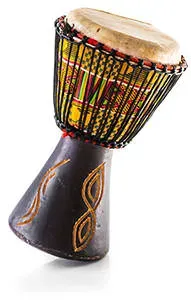 On the sixth day of Kwanzaa, which is New Year's Eve, a feast called Kwanzaa Karamu is traditionally held. Everyone present at the dinner is encouraged to drink from the Kikombe cha Umoja and partake in a festive entertainment program. Celebrants are encouraged to reflect, remember, reassess, and recommit to greater unity within the family and the African community. Oftentimes, participants may share with the others a story of someone who has been an inspiration to them. African drumming, singing and other creative performances, as well as reading from African passages, is encouraged, as it adds a joyous flavor and meaning to the celebration.
On the sixth day of Kwanzaa, which is New Year's Eve, a feast called Kwanzaa Karamu is traditionally held. Everyone present at the dinner is encouraged to drink from the Kikombe cha Umoja and partake in a festive entertainment program. Celebrants are encouraged to reflect, remember, reassess, and recommit to greater unity within the family and the African community. Oftentimes, participants may share with the others a story of someone who has been an inspiration to them. African drumming, singing and other creative performances, as well as reading from African passages, is encouraged, as it adds a joyous flavor and meaning to the celebration.
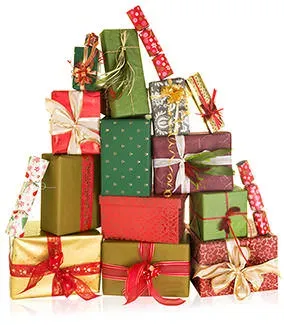 On the last day of Kwanzaa, Zawadi, or gifts are exchanged, usually from parents to children. This shows the love the parents feel towards their children and symbolizes the commitment of the children to uphold African traditions in the future. Kuumba, or the sixth value of creativity, is encouraged to be the driving force in gift-giving. Therefore, gifts at Kwanzaa should be educational or artistic, even possibly handmade. Gifts relating to African culture are especially appropriate. Some examples might be handmade or weaved baskets, beads, books about African heritage, CDs with African songs, African themed home d�cor, jewelry with African heritage symbols, and African textiles and fabric. An ideal present, however, would encourage community pride, growth, self-determination and success � the very values that Kwanzaa embodies.
On the last day of Kwanzaa, Zawadi, or gifts are exchanged, usually from parents to children. This shows the love the parents feel towards their children and symbolizes the commitment of the children to uphold African traditions in the future. Kuumba, or the sixth value of creativity, is encouraged to be the driving force in gift-giving. Therefore, gifts at Kwanzaa should be educational or artistic, even possibly handmade. Gifts relating to African culture are especially appropriate. Some examples might be handmade or weaved baskets, beads, books about African heritage, CDs with African songs, African themed home d�cor, jewelry with African heritage symbols, and African textiles and fabric. An ideal present, however, would encourage community pride, growth, self-determination and success � the very values that Kwanzaa embodies.